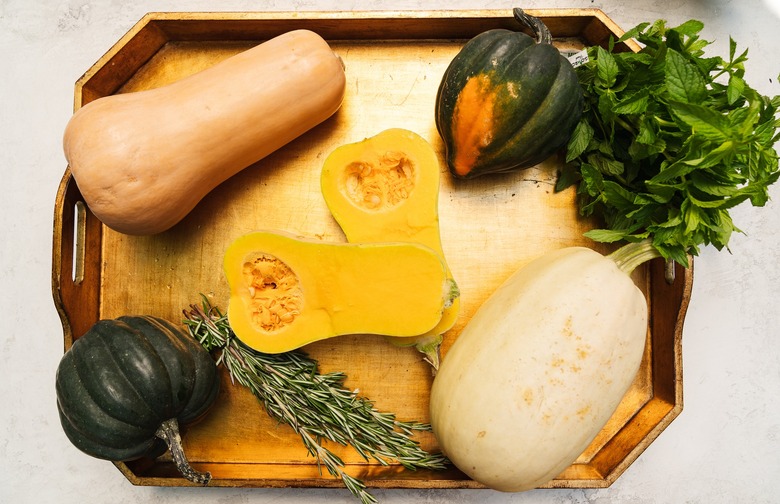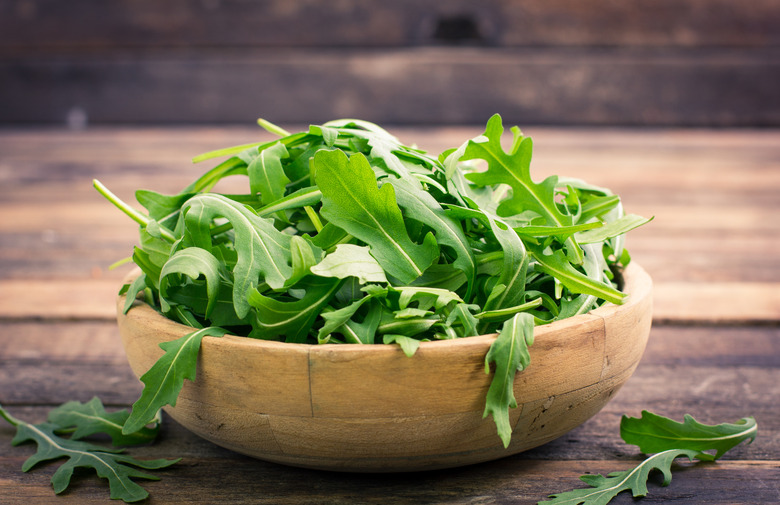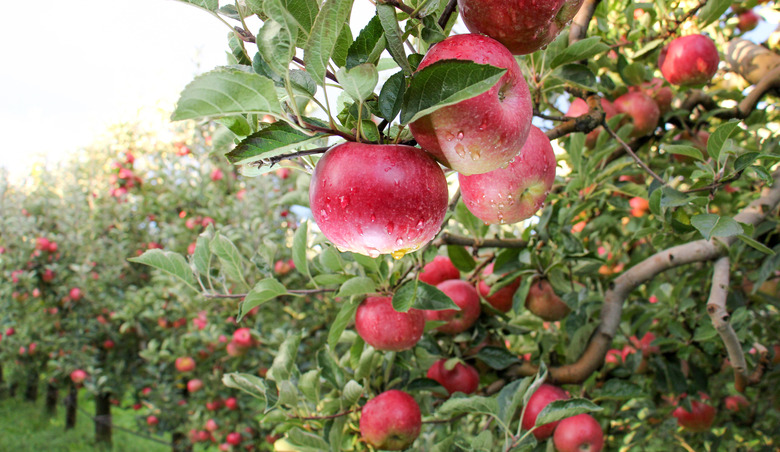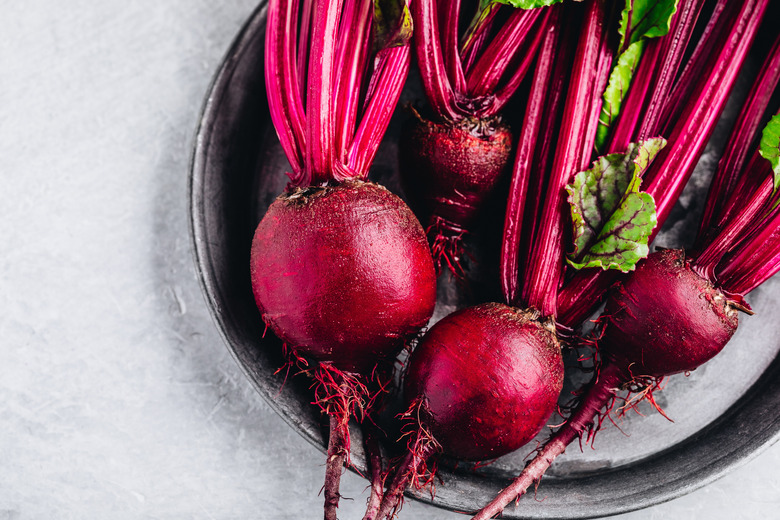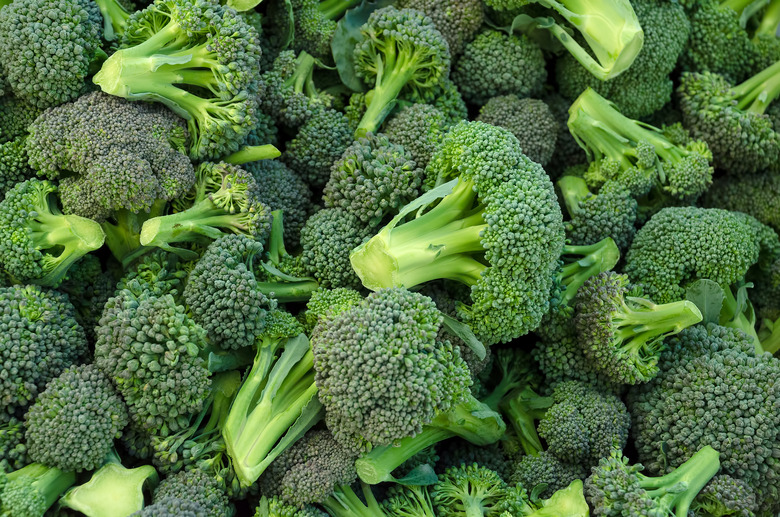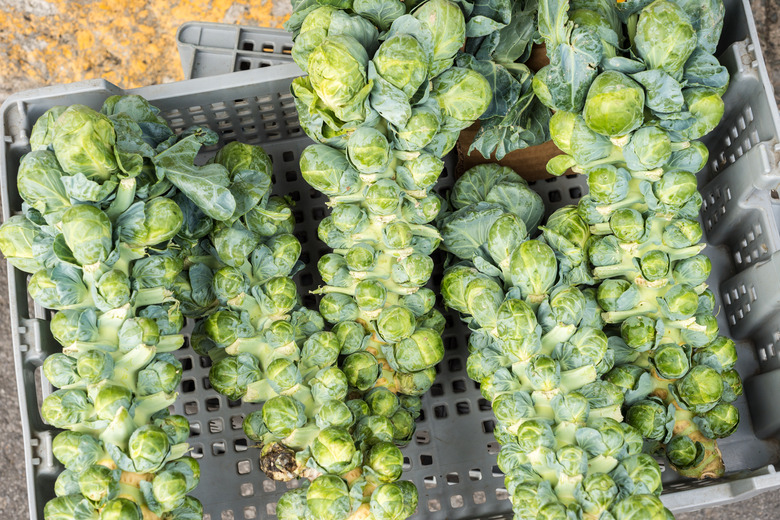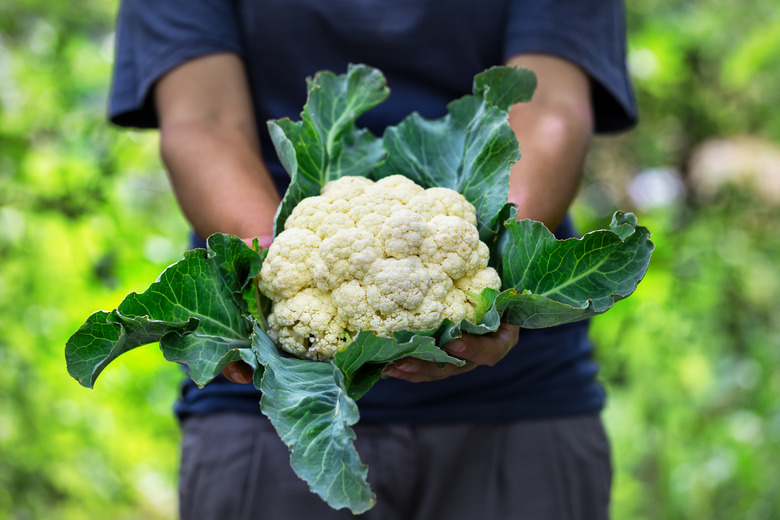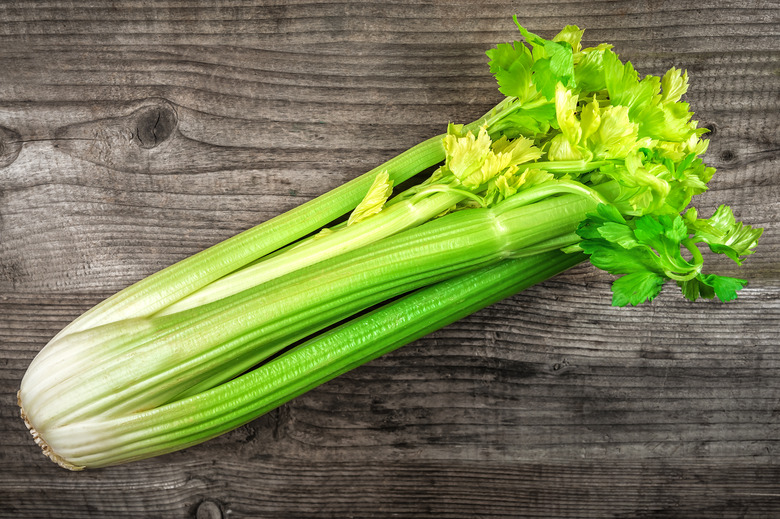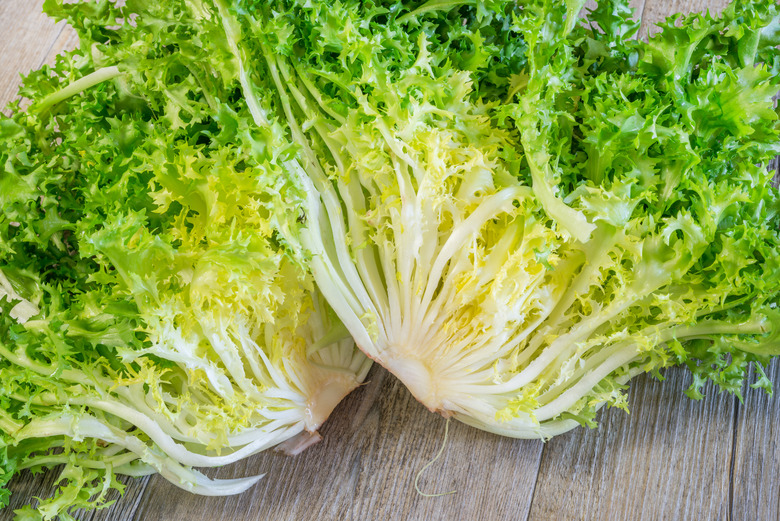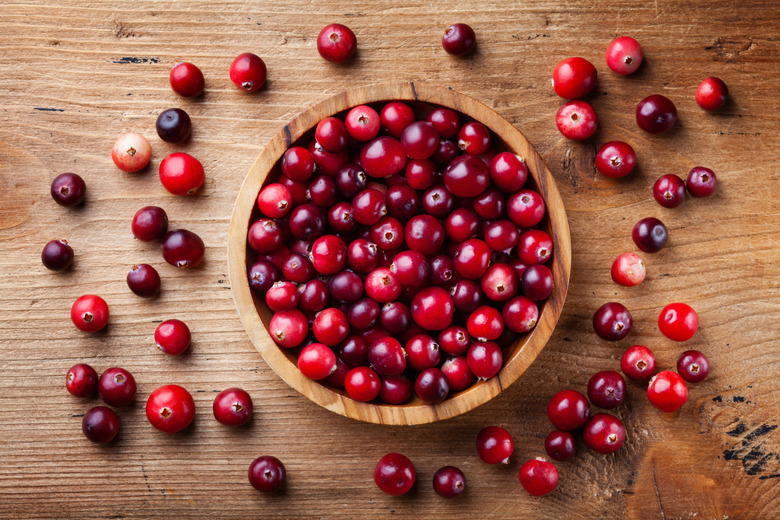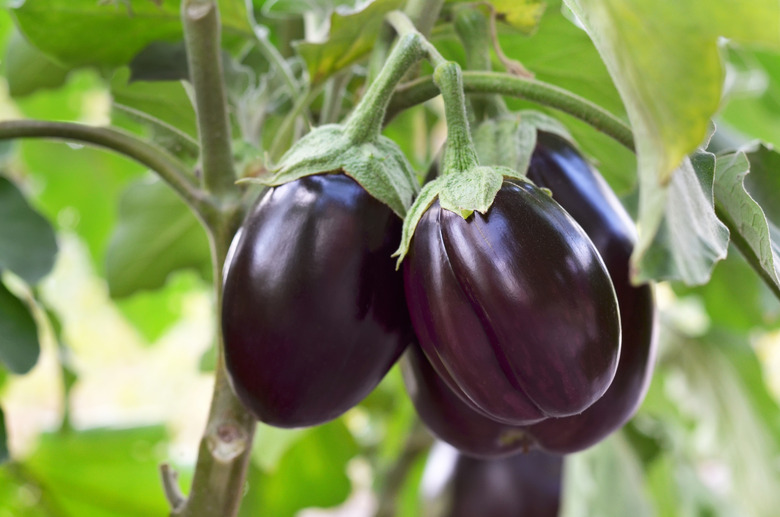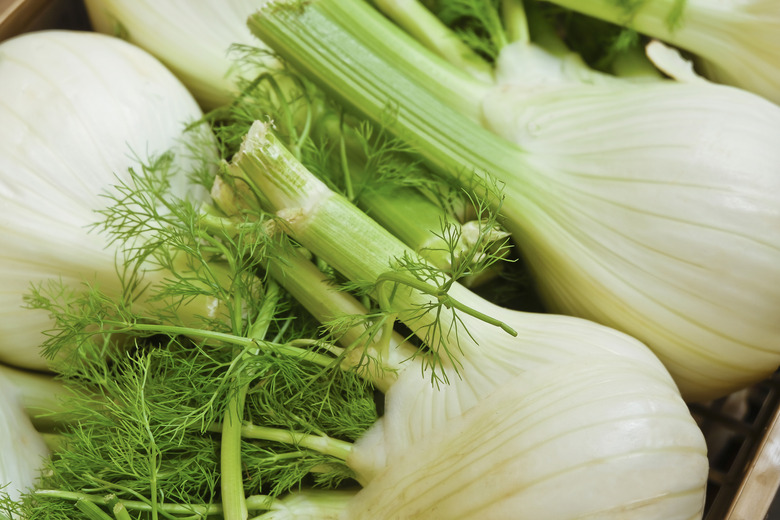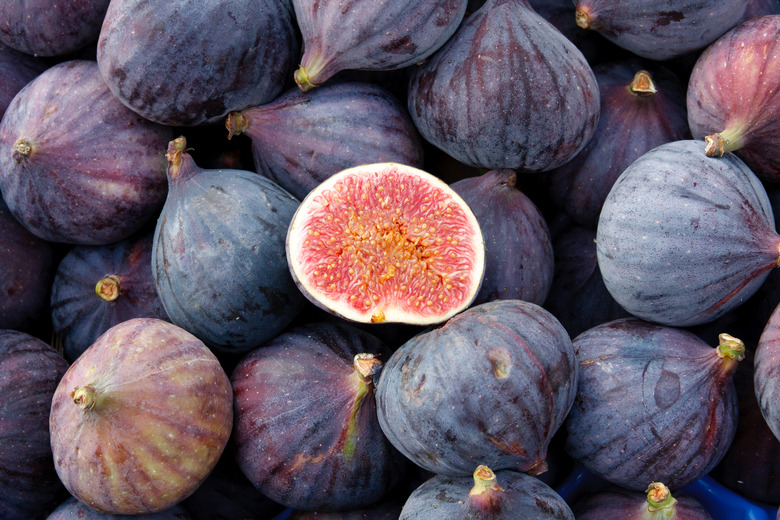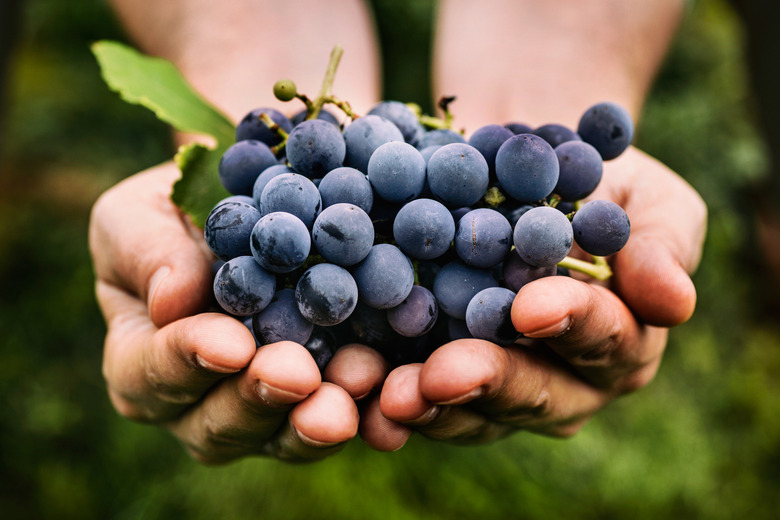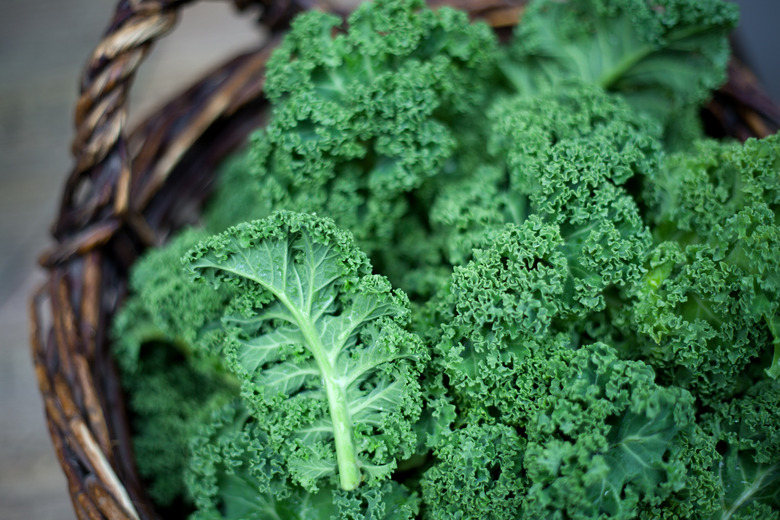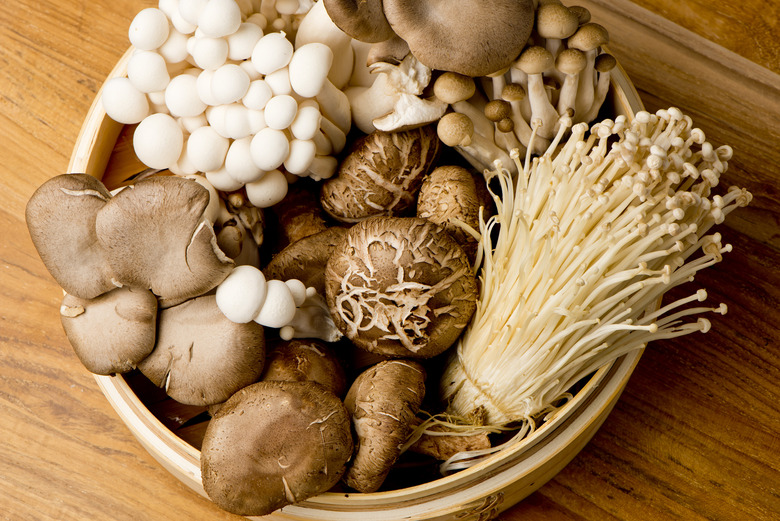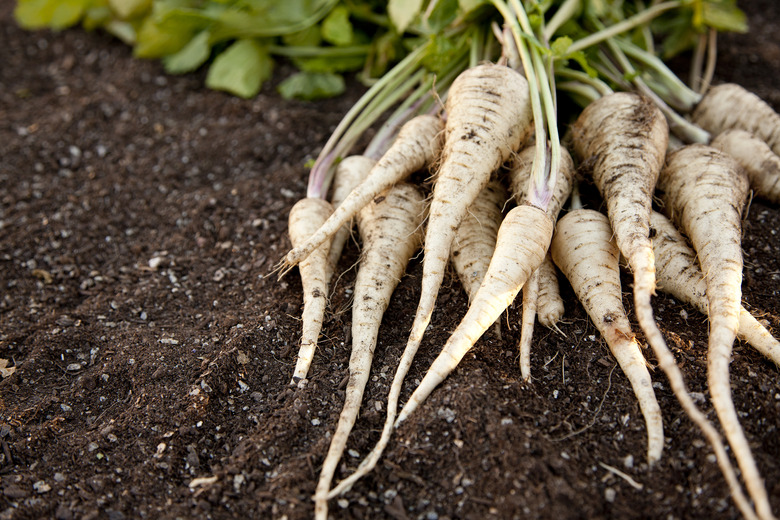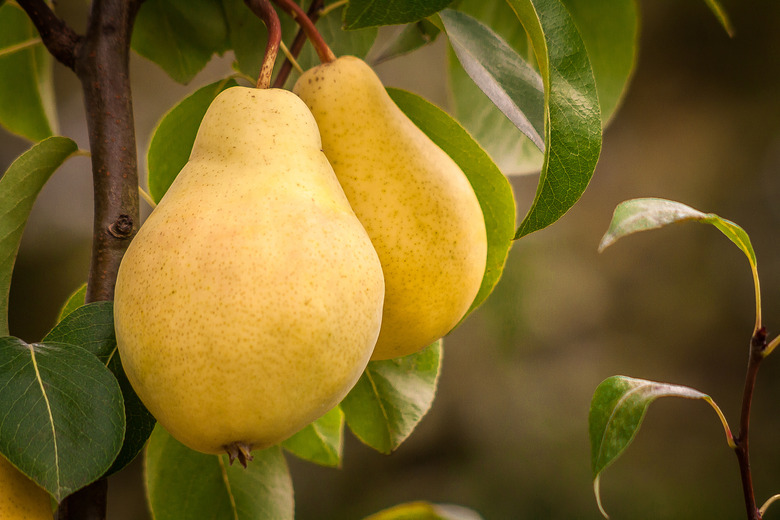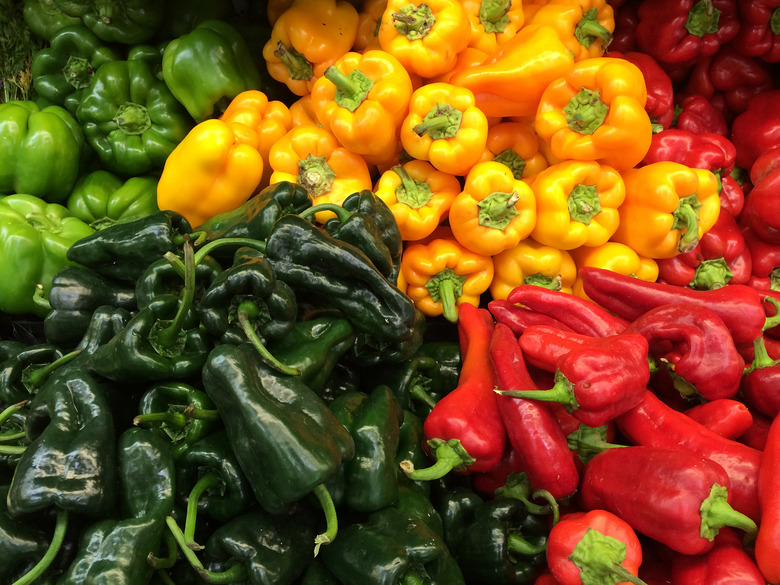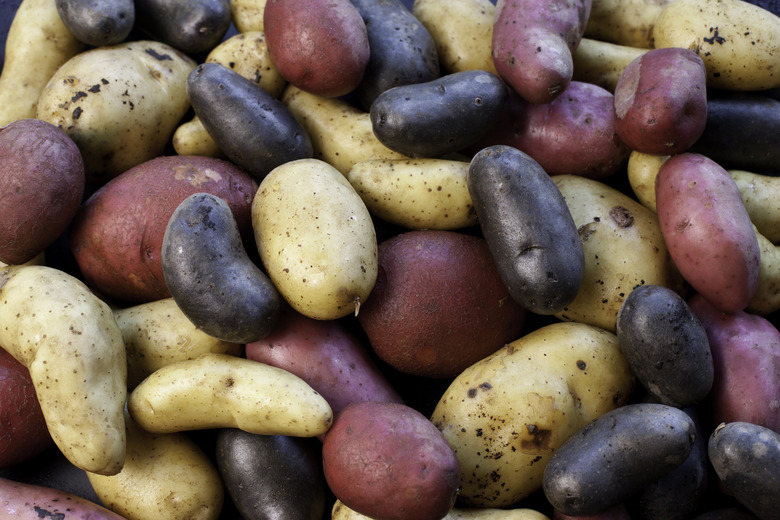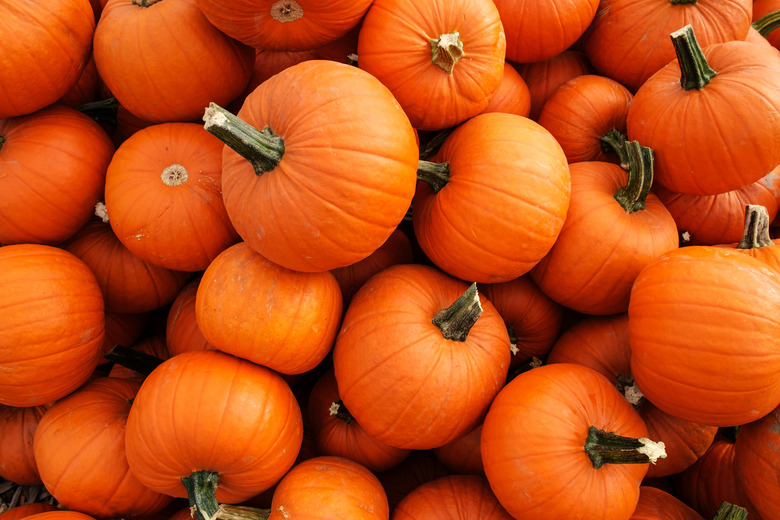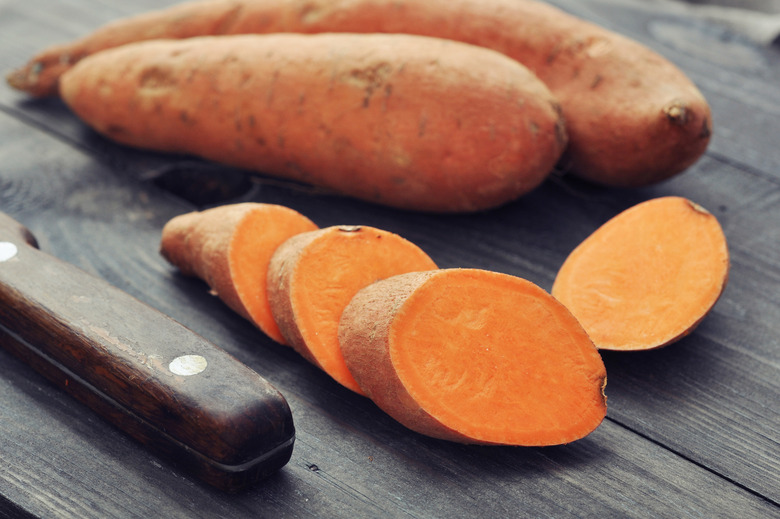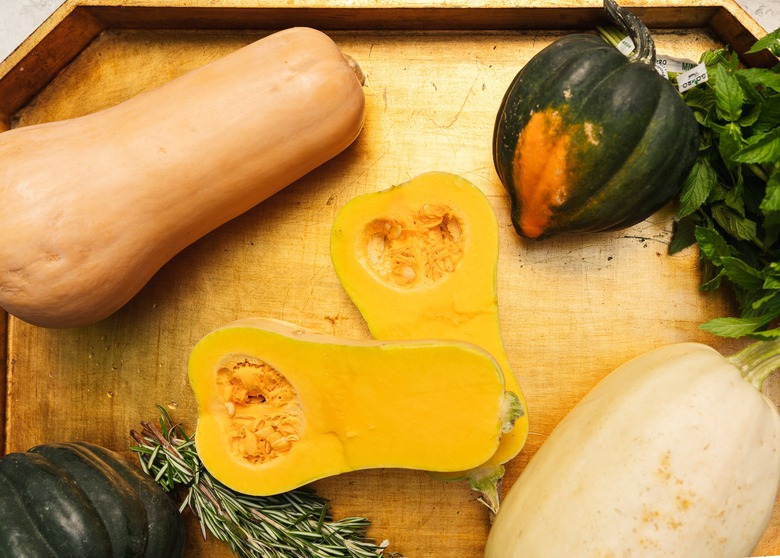What's In Season In Fall: Squash, Apples, Potatoes And More
Perhaps more than any other season, fall is associated with the harvest. Farmers markets, grocery stores and gardens simply overflow with hearty winter squash, sweeter-than-heaven apples and bold root vegetables that practically beg to be roasted. What's in season this fall? Well, we're glad you asked.
Arugula
Arugula is technically in season all year long, but it tastes best in early spring and fall. This peppery green is best known as the star of upgraded salads, whether it's paired with farro or citrus and pomegranate. Beyond salads, arugula makes a surprisingly scrumptious pizza topping as well as a bold base for an eggy breakfast skillet.
Apples
Apple season depends both on your region and the apple variety, but most of the time, apples are available from late July through early November, making them a favorite fall fruit. Of course, apples — with a scoop of peanut butter — are best known as an after-school snack or as the star of apple pie, but there are plenty of things you can make with apples, including apple cake, Japanese curry with apples and carrots and apple cheddar scones.
Beets
Beets come into season in the summer months and stay in season throughout the fall. Earthy with the potential to be sweet, beets do best when roasted simply in the oven, though you can certainly use them to make soup, salads, sauce or healthy chips.
Broccoli
America's favorite vegetable, it's hard to think of broccoli as even having a season, but it peaks in October through spring. What can't you do with broccoli? Of course, you can roast it in the oven, steam it or eat it raw in a salad for easy preparations. Broccoli also has some surprising uses, like broccoli Parmesan or broccoli gratin. If you sense a theme, though, it's because broccoli pairs wonderfully with cheese, like in these comfort food recipes.
Brussels sprouts
If you see Brussels sprouts available on the stalk at the farmers market from September through November, snatch them up ASAP as that's when they're most delicious. The classic way to use this cruciferous vegetable is to roast it in the oven, though an air fryer also does amazing work. For an un-roasted Brussels sprout experience, shave them thin and serve them raw in a salad with other fall favorites, pear and pomegranate.
Cauliflower
Cauliflower season varies across the U.S., but its peak tends to be from September through November. Embrace the flavors of fall with curried cauliflower or everything roasted cauliflower. Cauliflower also has plenty of creative uses beyond "side dish." Use it in vegetarian-friendly versions of classic bar bites, like vegetarian Buffalo dip or Korean-fried cauliflower. It also does well as a swap for grains, like in this "couscous" recipe.
Celery
Best known as a snack or as a vehicle for your favorite dips, celery is in season beginning in the late summer and through the early part of fall. Eat it on its own, as the base of ants on a log, or make some seriously refreshing agua fresca. Celery may feel like a spring or summer nosh, but it's an integral ingredient in one veggie-loaded holiday classic side dish: stuffing.
Chicories
Chicories are leafy greens with an intensely bitter flavor and hearty texture. Examples include (but aren't limited to): endive, frisée, radicchio and escarole. These are often used in bold salads perfect for fall and winter, like curly endive salad or quinoa radicchio salad with cauliflower. You can find chicories primarily in September and October, though the season's length will vary depending on where you live.
Cranberries
Best known as the colorful addition to a holiday plate via cranberry sauce, cranberries are in season from September through December. Of course, cranberries have uses far beyond sauce. They're great when paired with orange zest and baked into a bread or when used to top a pretty baked brie appetizer.
Eggplant
Eggplant season starts in the summer and continues through early fall. Embrace eggplant parmesan, the ultimate fall comfort food. Eggplant is also delicious when mashed and charred or baked with tomatoes.
Fennel
In peak season from fall through spring in most of the U.S., fennel has an anise flavor (think: black licorice) that can be divisive. This bold, fronded vegetable can be served on its own after braising, as a star ingredient in a West African-inspired stew or paired with a mild, tender protein like salmon.
Figs
You can find fresh figs primarily from August through October—they're a phenomenal fall ingredient. Prepare for the holidays by making this spirited fig brandy or some dried fruit. If you want your fig fix now, turn them into a spread or serve as a sweet garnish on a pretty seasonal charcuterie board.
Grapes
Depending on where you live, grape season can stretch all the way from July to December, but in most regions, this favorite fruit peaks in September. Much like figs, fresh fall grapes go great on charcuterie boards and are fabulous to munch on as-is; they also pair well with cheese, as this pan-fried feta and this rustic grape galette prove.
Kale
The base for plenty of our best salad recipes, kale is in season beginning in the late summer and through the fall. Beyond a hearty autumn salad, kale is great when turned into chips, stirred into a soup or baked into lasagna.
Mushrooms
Mushrooms are widely available all year long, but they peak starting in the fall. Earthy and packed full of vitamin D, mushrooms are a great addition to almost any recipe, but we particularly like them cooked in a skillet, in a delicious stroganoff or on top of a creamy, decadent risotto.
Parsnips
A sturdy root vegetable, parsnips are at their best from fall through early spring. You can roast them and serve them with a lazy vinaigrette or slice them thin with a mandolin and turn them into root veggie chips. If you're in more of a soup mood, parsnips make a great autumn soup.
Pears
Pears have a very similar season to apples and are available from August through November. Delicate and sweet, pears offer a great contrast to bleu cheese in a sandwich and also do very well when poached. If you find yourself with an excess of pears, can them in a ginger syrup.
Peppers
Peppers of all kinds, from mildly sweet bell peppers to fiery habaneros, are in season from July through October. Bell peppers shine when eaten raw with hummus or when stuffed and baked. Poblanos make a great addition to a taco filling. Hotter peppers are best when turned into salsa or other dips.
Potatoes
Potato season will vary, but it begins in the summer and continues strongly through the fall in most regions of the U.S. Potatoes have many marvelous uses — some of our favorite fall preparations include classic mashed potatoes, scalloped potatoes, loaded baked potatoes and potato soup.
Pumpkin
Just ask any jack-o'-lantern, pumpkin season starts in September in much of the country and goes strong through October. Of course, when it comes to culinary uses, smaller pie pumpkins (also called sugar pumpkins) are best and can be used just like canned pumpkin in pumpkin pie. If you want to get creative with pumpkin, try this sweet squash in tacos or roasted and served with meat sauce.
Sweet Potatoes
An autumnal classic, sweet potatoes are typically harvested from late August to early November. Roasting sweet potatoes is a favorite way to make this veggie, but you can also use them in a mash or in hearty fall soups.
Winter Squash
Despite its name, winter squash is perhaps the most popular fall produce. While its season continues through December, squash will start to pop up as early as late August. There are dozens of kinds of winter squash out there, but some of the most popular include butternut, acorn, kabocha, spaghetti and buttercup. How you cook your squash will depend on the kind you buy. When in doubt, roast it, stuff it or turn it into a soup. And now that you know what's in season in the fall, learn what's in season year-round, by the month.
More from The Daily Meal:
What's in Season in Summer: Tomatoes, Peaches, Peppers and More
What's in Season in Spring: Asparagus, Spinach, Peas and More
50 Vegetarian Dinner Ideas for When You Don't Know What to Cook
